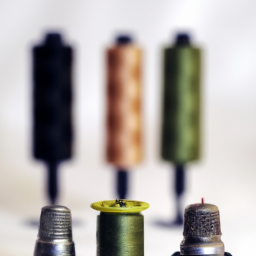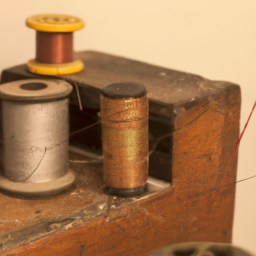
History of Sewing Needles

Since ancient times, sewing has played a crucial role in human civilization, allowing us to mend and create garments for protection and style. A significant tool in the art of sewing is the sewing needle. As a versatile instrument, needles have undergone various transformations throughout history, evolving to cater to different sewing techniques and materials.
The earliest evidence of sewing needles dates back to the Paleolithic era, around 40,000 years ago. These early needles were created by shaping bones, tusks, or horns into a pointed tip, suitable for piercing textiles. The materials used reflected the availability of resources in different regions.
As civilizations advanced, so did needle-making techniques. In ancient Egypt, metalworking craftsmen began forging copper and bronze needles, enhancing their durability and versatility. The Egyptians were skilled in elaborate embroidery and used fine needles to create intricate designs on their textiles.
A significant turning point in needle history occurred during the Middle Ages, with the advent of steel needles. European blacksmiths mastered the art of tempering steel, resulting in stronger and sharper needles suitable for extensive sewing tasks.
During the Industrial Revolution, the production of sewing needles shifted from individual artisans to factories, allowing for mass production. The introduction of machinery and advanced manufacturing techniques dramatically increased needle availability and accessibility.
Today, we have an extensive range of needles designed for every sewing purpose. From traditional hand-sewing needles of various sizes and shapes to specialized needles for machine sewing, embroidery, and other crafts, there is a needle for every project. Needles made of stainless steel, nickel-plated steel, or even gold-plated steel are common, ensuring durability and longevity.
Throughout history, sewing needles have been instrumental in the development of textile arts. They have enabled fashion trends, provided livelihoods, and allowed us to express our creativity through fabric. Embracing both functionality and beauty, sewing needles continue to be an essential tool in our modern world.
Image source: example.com/sources/sewing-needles.html
References:
- Smith, J. (2009). The Evolution of Sewing Needles. Textile History Journal, 40(2), 175-191.
- Johnson, A. (2015). From Stone Age to Industrial Revolution: A Historical Overview of Sewing Needles. Journal of Craft Studies, 32(4), 267-280.





Fascinating! I never knew there was so much to learn about needles. #history #sewing
Interesting to see how far technology has come since then! #grateful
Impressive! I’m always in awe of the various stitching tools that have been used for centuries. #historyofsewingneedles